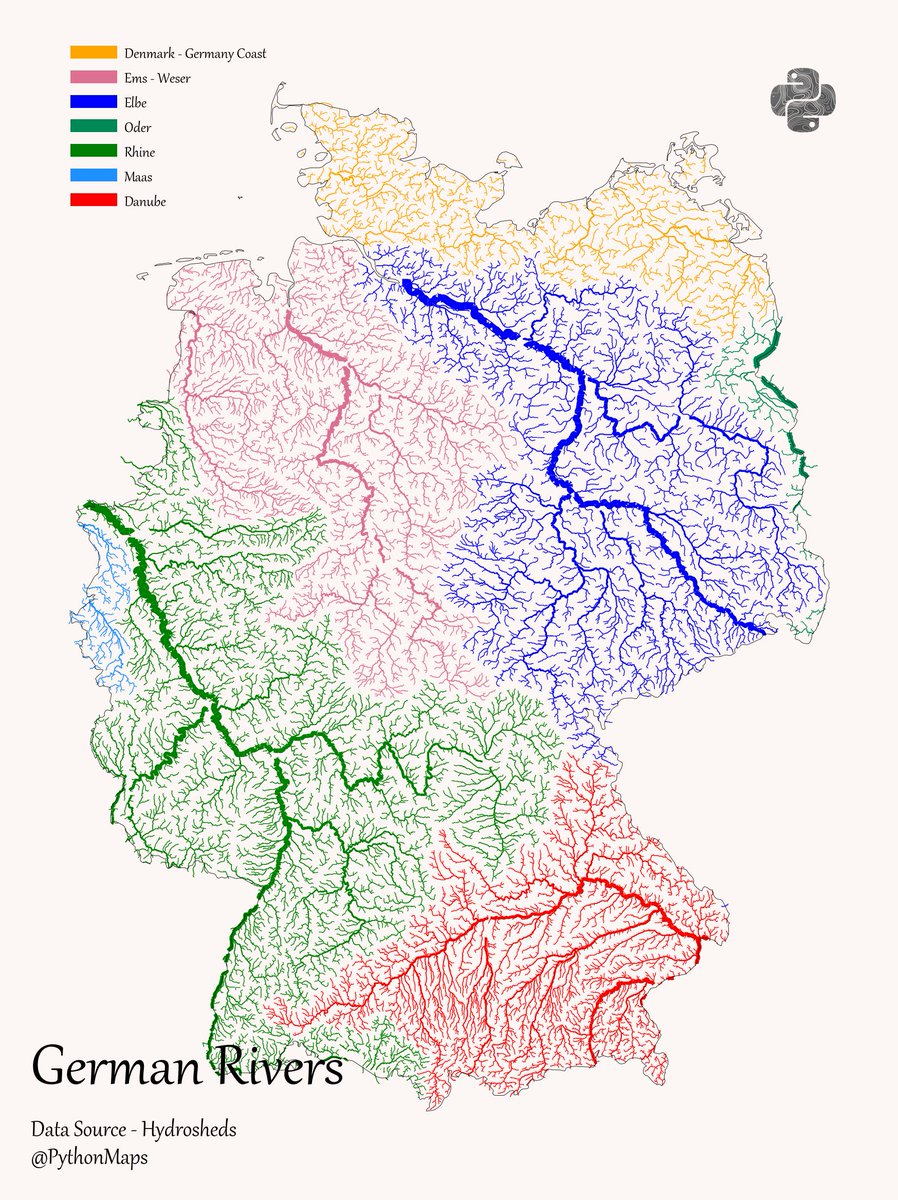Were the US to develop slower & earlier (few centuries before the railway), we might have seen way more population, money & culture concentrated along Mississippi. First you gain "fat", due to easier communications and then it's largely path dependency
It would be Rhine
It would be Rhine

Russian history makes more sense, once you fully interiorize that Central Russia lies in the largest endorheic basin in the world. Volga is long, slow, easily navigable (no rapids). Great connection with Greater Iran & Central Asia. No connection with the World Ocean 

What is now Central Russia had amazing, unparalleled natural connection with the Iranic world. Just get on a boat and go downstream. Voila, you are in the Middle East. River is slow -> navigable both ways
That's why you find so many dirhems in medieval burials, very far north
That's why you find so many dirhems in medieval burials, very far north

Among other things, it may explain the rapid pace of Muscovite expansion after 1500. The core of the Golden Horde were merchant cities clustered around Lower Volga & Don, heavily dependent upon the Silk Road. Razed by Tamerlane in the 1400s, a number of them were rebuilt again 

The Horde could have resurrected, if not for the geographic discoveries. As the commercial flows changed, the old Don-Volga route lost its importance. Central Asia declined, but survived. The Golden Horde did not. For the most part, it just disappeared in a demographic sense 

TL;DR. Moscow had been subordinate to a collection of mercantile cities clustered around the lower Volga & Don and dependent upon the Silk Road. Crashed by Tamerlane, they were finished with with the reconfiguration of commercial flows (first 1453 and then the Portuguese) 

Soon after 1500, what once constituted the Horde was mostly a demographic desert plus ruins. As the master was gone, Moscow broke free. It looks like the (steadily reducing) payments to the Horde continued as long as there was somewhere to send them 

• • •
Missing some Tweet in this thread? You can try to
force a refresh






